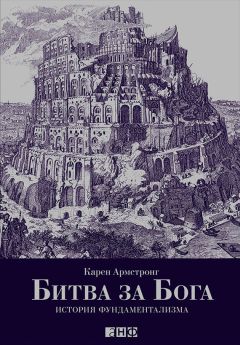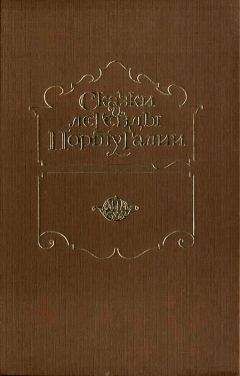Ознакомительная версия.
391
Marsden, Fundamentalism and American Culture, 90–92; Fuller, Naming the Antichrist, 119. Пресвитерианцы, например, Уильям Дженнингс Брайан, не являвшийся премилленаристом, смотрели на демократию более оптимистично, считая ее торжеством кальвинизм, который выражает равенство всех людей перед Господом.
Boyer, When Time Shall Be No More, 192; Marsden, Fundamentalism and American Culture, 154–155.
Szasz, The Divided Mind, 85.
Marsden, Fundamentalism and American Culture, 147–148.
Szasz, The Divided Mind, 86.
Marsden, Fundamentalism and American Culture, 147–148.
The King's Business, 19, 1918.
«Unprincipled Methods of Postmillenalists,» in ibid.
Marsden, Fundamentalism and American Culture, 147.
Ibid., 162.
Szasz, The Divided Mind, 91.
Ibid, 90–91.
The Watchtower Examiner, July 1920; Fuller, Naming the Antichrist, 120.
Marsden, Fundamentalism and American Culture, 182–183.
Ibid., 157–60, 165–75, 180–84; Szasz, The Divided Mind, 94–100.
Marsden, Fundamentalism and American Culture, 171–174.
Szasz, The Divided Mind, 102.
Ammerman, «North American Protestant Fundamentalism,» 26; Marsden, Fundamentalism and American Culture, 169–183; Ronald L. Numbers, The Creationists: The Evolution of Scientific Creationism (Berkeley, Los Angeles, and London, 1992), 41–44, 48–50; Szasz, The Divided Mind, 107–118.
To J. Baldwin, March 27, 1923, in Numbers, The Creationists, 41.
Marsden, Fundamentalism and American Culture, 184–189; R. Laurence Moore, Religious Outsiders and the Making of Americans (Oxford and New York, 1986), 160–163; Szasz, The Divided Mind, 117–135; Numbers, The Creationists, 98–103.
Union Seminary Magazine 32 (1922); Szasz, The Divided Mind, 110.
«The Evolution Trial», Forum, 74 (1925)
Marsden, Fundamentalism and American Culture, 187.
Ibid., 187–188.
Moore, Religious Outsiders, 161–63.
Marsden, Fundamentalism and American Culture, 217.
The King's Business, 40, 1922.
Деяния апостолов, 2:1–6.
Иоиль, 3:1–5.
Harvey Cox, Fire from Heaven: The Rise of Pentecostal Spirituality and the Reshaping of Religion in the Twenty-first Century (New York, 1995), 48–74.
К римлянам 8:26, Cox, Fire from Heaven, 87.
Cox, Fire from Heaven, 63.
Ibid., 76–77.
Ibid., 57, 69–71.
Ibid., 63.
Ibid., 67.
Ibid., 81–122.
Ibid., 81.
«The Aesthetics of Silence,» in A Susan Sontag Reader (New York, 1982), 195. В рус. переводе: Сьюзен Зонтаг. Эстетика молчания. Ч. I (http://temporaryshop.ru/arts-theory/412-i); Сьюзен Зонтаг. Эстетика молчания. Ч. II (http://temporaryshop.ru/arts-theory/415-ii ).
Ibid.; Cox, Fire from Heaven, 91–92.
Cox, Fire from Heaven, 75.
Asher Ginsberg (Ahad Ha-Am), «Slavery in the Midst of Freedom,» Complete Writings (Jerusalem, 1965), 160.
Amos Elon, The Israelis, Founders and Sons, rev. ed. (London, 1984), 105, 112.
Eliezer Schweid, The Land of Israel: National Home of Land of Destiny (trans. Deborah Greniman; New York, 1985), 158.
Arthur Hertzberg (ed.), The Zionist Idea (New York, 1969), 377.
На самом деле подобного постановления Второй сионистский конгресс не выносил, однако светский характер сионизма действительно обозначил.
«Brooks of the Negev,» in Aviezer Ravitsky, Messianism, Zionism and Jewish Religious Radicalism (trans. Michael Swirsky and Jonathan Chipman; Chicago and London, 1993), 95.
«On Zion,» in Ravitsky, Messianism, 89.
«Eulogy», in Ravitsky, Messianism, 99.
«Eder Ha-Yakel,» in Ravitsky, Messianism, 107.
«Orot,» in Ravitsky, Messianism, 102.
Ibid.
M. Sotah 9:7. С трактатом Сота на рус. языке можно ознакомиться здесь: http://www.evrey.com/sitep/talm/index.php3?trkt=sota .
«Orot,» in Ravitsky, Messianism, 108.
Ibid., 104–111.
«Arpeli Tohar,» in Ravitsky, Messianism, 105.
«Orot ha Kodesh,» in Ravitsky, Messianism, 117.
Kook, «The War,» in Herzberg, The Zionist Idea, 423.
Bernard Avishai, The Tragedy of Sionism: Revolution and Democracy in the Land of Israel (New York, 1985), 94.
«Iggerot ha Regati,» in Ravitsky, Messianism, 120.
«Orot,» in Ravitsky, Messianism, 120.
«Iggerot ha Regati,» in Ravitsky, Messianism, 121.
Alan L. Mittelman, «Fundamentalism and Political Development: The Case of Agudat Israel,» in Lawrence J. Silberstein (ed.), Jewish Fundamentalism in Comparative Perspective: Religion, Ideology, and the Crisis of Modernity (New York and London, 1993), 225–231.
Ibid., 231.
Ibid., 234.
Ibid., 235.
Youssef M. Choueiri, Islamic Fundamentalism (London, 1990), 64.
Marshall G. S. Hodgson, The Venture of Islam: Conscience and History in a World Civilization, 3 vols. (Chicago and London, 1974), III, 171.
Albert Hourani, Arabic Thought in the Liberal Age, 1798–1939 (Oxford, 1962), 170–183.
Ibid., 183–189.
Ibid., 240–243.
Ibid., 224, 230.
Ibid., 243–244.
Ibid., 242.
Azar Tabari, «The Role of the Clergy in Modern Iranian Politics,» in Nikki R. Keddie (ed.), Religion and Politics in Iran: Shiism from Quietism to Revolution (New Haven, Conn., and London, 1983), 57.
Nikki R. Keddie, Roots of Revolution: An Interpretive History of Modern Iran (New Haven, Conn, And London, 1981), 72, 73.
Mangol Bayat, Mysticism and Dissent: Socioreligious Thought in Qajar Iran (Syracuse, N. Y., 1982), 184–186.
Nikki R. Keddie, «The Roots of the Ulama's Power in Modern Iran,» in Keddie (ed.), Scholars, Saints and Sufis: Muslim Religious Institutions in the Middle East Since 1500 (Berkeley, Los Angeles, and London, 1972), 227.
Hamid Algar, «The Oppositional Role of the Ulama in Twentieth-Century Iran,» in Keddie (ed.), Scholars, Saints and Sufis, 231–234.
Ibid., 237–238; Riesebrodt, Pious Passion: The Emergence of Modern Fundamentalism in the United States and Iran (trans. Don Reneau; Berkeley, Los Angeles, and London, 1993), 109–110. На рус. языке в реферативном изложении см.: Васильев А. В. Ризеброт. Набожные страсти. Возникновение современного фундаментализма в Соединенных Штатах и в Иране // Социальные и гуманитарные науки. Отечественная и зарубежная литература. Серия 5: История. Реферативный журнал. ИНИОН РАН. – 1996. – № 4. – С. 231–232; Tabari, «The Role of the Shii Clergy,» 58.
Algar, «The Oppositional Role of the Ulama,» 238.
Ibid., 238–40; Tabari, «The Role of the Clergy,» 58–59.
Keddie, Roots of Revolution, 82.
George Steiner, In Bluebeard's Castle: Some Notes Toward the Re-definition of Culture (New Haven, Conn., 1971), 32. На рус. языке можно ознакомиться с одним отрывком из книги: Стайнер Дж. Великая Ennui: Эссе из книги «В замке Синей Бороды. Заметки к новому определению культуры» // Иностр. лит. – 2000. – № 8. – С. 261–271.
Zygmunt Bauman, Modernity and the Holocaust (Ithaca, N. Y., 1989), 77–92. В рус. переводе: Бауман З. Актуальность холокоста. – М.: Европа, 2010.
Steiner, In Bluebeard's Castle, 47–48. На рус. языке можно ознакомиться с одним отрывком из книги: Стайнер Дж. Великая Ennui: Эссе из книги «В замке Синей Бороды. Заметки к новому определению культуры» // Иностр. лит. – 2000. – № 8. – С. 261–271.
Samuel C. Heilman and Menachem Friedman, «Religious Fundamentalism and Religious Jews,» in Martin E. Marty and R. Scott Appleby, Fundamentalisms Observed (Chicago and London, 1991), 223.
Aviezer Ravitsky, Messianism, Zionism and Jewish Religious Radicalism (trans. Michael Swirsky and Jonathan Chipman; Chicago and London, 1993), 43.
Preface to Va Yoel Moshe, in Ravitsky, Messianism, 65.
Ravitsky, Messianism, 45.
Ibid., 50–51.
Ibid., 63–65.
Ibid., 54–55.
Ibid., 42.
Ibid., 53. Хесед (милость) и дин (сила, строгий суд) – две из 10 божественных эманаций в каббале, которые необходимо тщательно уравновешивать, иначе мир постигнет «строгий суд» Господа.
Армстронг К. Иерусалим. Один город, три религии. – М.: Альпина нон-фикшн, 2011.
Хагига, 2:7.
Heilman and Friedman, «Religious Fundamentalism and Religious Jews,» 226–29; Gerald Cromer, «Withdrawal and Conquest: Two Aspects of the Haredi Response to Modernity,» in Laurence J. Silberstein (ed.), Jewish Fundamentalism in Comparative Perspective: Religion, Ideology, and the Crisis of Modernity (New York and London, 1993), 166–68; Ravitsky, Messianism, 77.
Ознакомительная версия.





